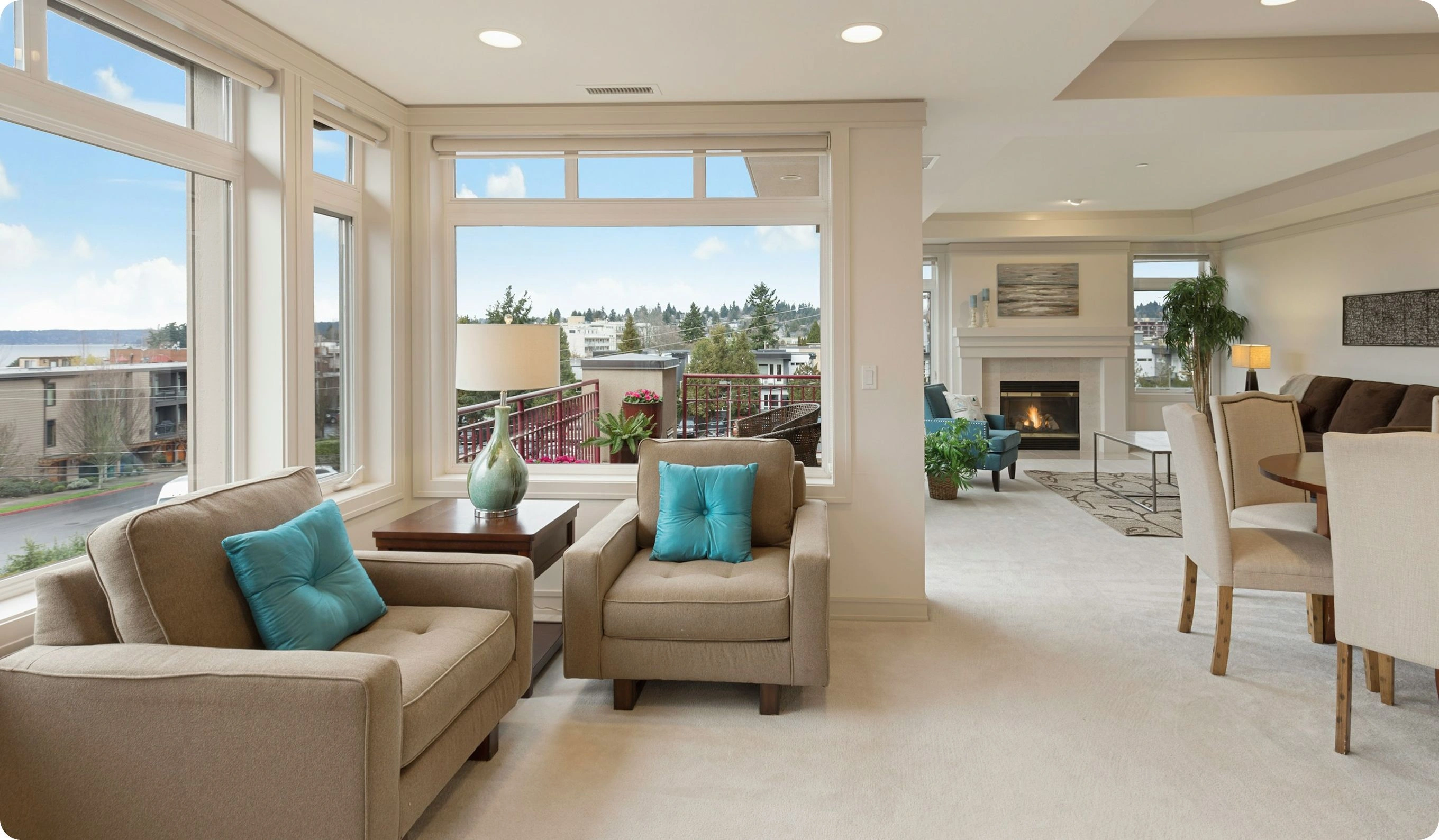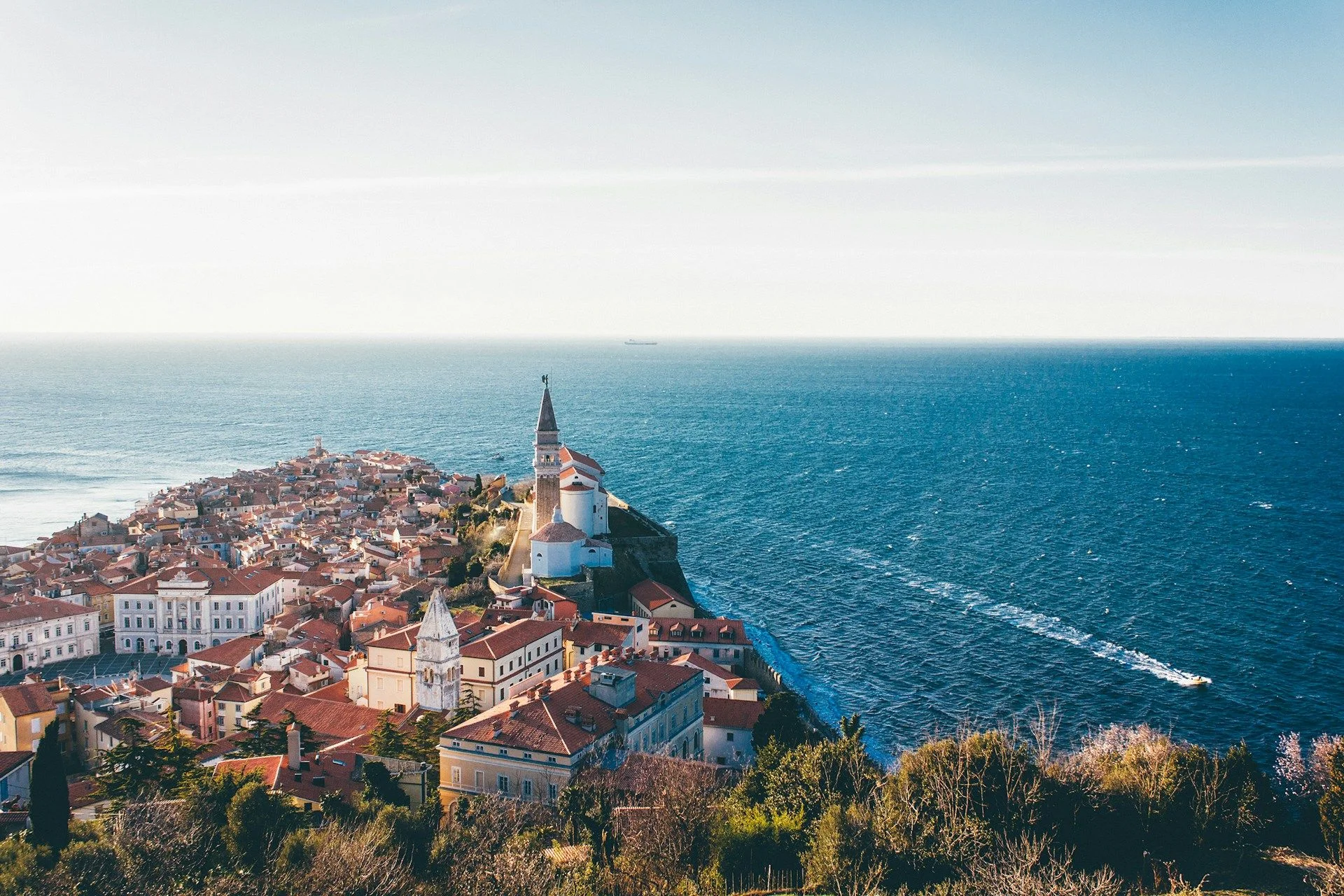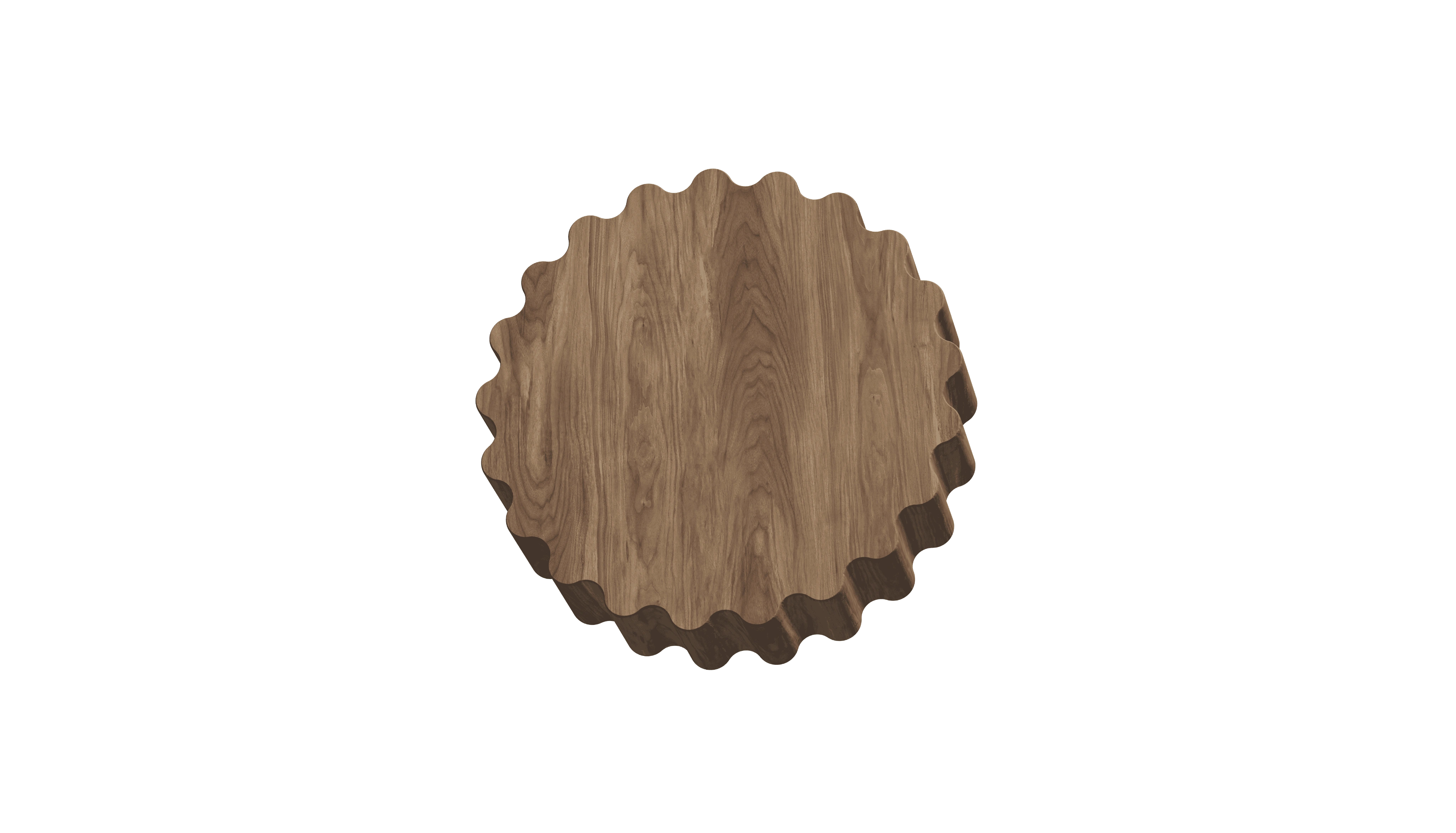Advantages of traveling
to Slovenia
Alpine Lake Retreats
Immerse yourself in crystal-clear waters of Lake Bled and Lake Bohinj, kayak round island churches, and unwind at lakeside spas beneath Triglav’s majestic peaks.
Historic Castle Explorations
Wander Ljubljana Castle’s ramparts and medieval courtyards, discover Predjama Castle built into a cliff, and explore creeping passages of Škofja Loka’s hilltop fortress, guided by local historians.
Wine & Culinary Trails
Taste award-winning wines in the rolling hills of Goriška Brda, join artisan vintners for cellar tastings of Rebula and Merlot, and savor local olive and honey pairings on gourmet tours.
Alpine Lake Retreats
Immerse yourself in crystal-clear waters of Lake Bled and Lake Bohinj, kayak round island churches, and unwind at lakeside spas beneath Triglav’s majestic peaks.
Historic Castle Explorations
Wander Ljubljana Castle’s ramparts and medieval courtyards, discover Predjama Castle built into a cliff, and explore creeping passages of Škofja Loka’s hilltop fortress, guided by local historians.
Wine & Culinary Trails
Taste award-winning wines in the rolling hills of Goriška Brda, join artisan vintners for cellar tastings of Rebula and Merlot, and savor local olive and honey pairings on gourmet tours.

Useful articles
and recommendations from experts
Tourism in Slovenia: Explore the Best Experiences
Slovenia, nestled between the Alps and the Adriatic Sea, offers a remarkably diverse tapestry of experiences for visitors seeking both outdoor adventure and cultural immersion. Tourism in Slovenia unfolds through fairytale Alpine lakes, pristine karst landscapes, medieval towns, and world-class wine regions. Whether you’re tracing the emerald shores of Lake Bled, uncovering subterranean wonders in Postojna Cave, or sampling white wines in Goriška Brda, travel experiences in Slovenia engage all senses. Efficient European rail links, Slovenia’s compact road network, and proximity to major airports in Ljubljana, Klagenfurt, and Trieste make how to visit Slovenia straightforward for both independent explorers and guided-tour groups. This guide outlines the best tours in Slovenia, practical logistics, insider tips, seasonal considerations, and curated recommendations to help you craft an itinerary that reveals the full breadth of this central European gem.
Why Slovenia is attractive for travelers
Slovenia’s enduring appeal stems from its astonishingly varied landscapes, rich heritage, and exceptional value. In the northwest, the Julian Alps rise abruptly, carving out emerald-blue lakes and rapid rivers; the mighty Triglav National Park protects everything from glacial valleys to centuries-old shepherd traditions. Here, the Soča River’s turquoise waters draw kayakers and anglers, while mountaineers scale ridges above 2,800 meters for panoramic vistas. To the southwest, the Karst Plateau reveals limestone caves and underground rivers—Postojna Cave’s 24 kilometers of passages showcase stalactite and stalagmite formations, while Škocjan Caves’ UNESCO-protected chasms thunder with subterranean rapids.
Beyond natural wonders, cultural tourism in Slovenia thrives in charming towns and cities. Ljubljana’s compact old town, rebuilt in the Baroque style by architect Jože Plečnik, centers on the triple-arched Dragon Bridge and the photogenic riverside café scene. Medieval hilltop towns like Škofja Loka and Ptuj preserve centuries-old fortifications and Gothic mansions, offering immersive strolls through cobblestone lanes. Slovenia’s rich tapestry of influences—Celtic, Roman, Slavic, Venetian, and Habsburg—unfolds in both architecture and cuisine. For many, sampling local delicacies—ikarine sardines on crusty bread along the coast, goat cheese in alpine refuges, or Slovenian stew (jota) near Bled—becomes an essential part of tourism in Slovenia, revealing the nation’s vibrant traditions and genuine hospitality.
Main Types of Tourism in Slovenia
Slovenia supports a variety of travel styles, ensuring that every visitor finds travel experiences in Slovenia tailored to their passions and pace. Adventure and Alpine Tourism is anchored in the Julian Alps and Kamnik–Savinja Alps, where hiking, via ferrata routes, paragliding, and winter sports thrive. The Three Brothers peaks above Kranjska Gora and the majestic Vršič Pass rank among Europe’s finest high-altitude drives.
Lake and River Tourism centers on Lake Bled and Lake Bohinj, offering stand-up paddleboarding, boat rides to the Bled island church, and mountain-bike loops around Bohinj. River-rafting on the Soča and kayaking through the Klančar Gorge deliver adrenaline-fuelled best tours in Slovenia.
Cultural and Heritage Tourism unfolds in Ljubljana’s Plečnik-designed bridges, Maribor’s ancient vine, and the thermal town of Ptuj—home to Slovenia’s oldest festival, Kurentovanje. Bespoke walking tours explore Gothic castles such as Otočec and medieval monasteries set in lush valleys.
Karst and Cave Tourism takes visitors beneath the surface at Postojna and Škocjan Caves, while above-ground the lipica Stud Farm and Lipica’s Lipizzaner horses offer equestrian experiences rooted in Habsburg tradition.
Wine and Culinary Tourism highlights the sun-drenched slopes of Goriška Brda and the rolling hills of the Vipava Valley, where small-scale vintners produce Rebula and Zelen. Food tours through central Slovenia emphasize Miža river trout, local honey, and seasonal mushrooms paired with organic craft beers.
Wellness and Spa Tourism leverages natural springs in Rogaška Slatina and Laško, where mineral-rich waters have drawn visitors for seven centuries. Luxury spa hotels in Dolenjska deliver modern wellness treatments amid rolling vineyards.
Coastal and Island Tourism covers Slovenia’s short but stunning coastline—Piran’s Venetian squares, Portorož’s sandy beaches, and salt-pan ecotours in Sečovlje highlight the Adriatic dimension of this landlocked country’s offerings.
Unique Attractions and Experiences
Slovenia’s hidden gems elevate its tourism in Slovenia beyond the typical. In the Soča Valley, military-historical hiking trails trace WWI battlegrounds, guided by experts who reveal the area’s dramatic past. The Vintgar Gorge, a narrow limestone canyon near Bled, delivers walking paths above rapids and waterfalls. Hikers on the Peaks of the Balkans traverse a 100-kilometer route connecting Slovenia, Montenegro, and Kosovo, staying in simple family-run mountain huts. In the Karst wine region, underground wine cellars carved from limestone host atmospheric tastings by candlelight. Coastal Piran’s St. George’s Church bell tower offers 360° views of the Adriatic at sunrise, while the ancient saltpans support specialized birdwatching safaris. Slovenia’s annual music festival at Ljubljana Castle and the Lent Festival on the Drava River in Maribor showcase international performers in unconventional venues—churchyards, vineyard terraces, and lakeside stages—ensuring every travel experience in Slovenia is both authentic and unforgettable.
Practical Tips for Travelers
When planning how to visit Slovenia, keep these Slovenia travel tips in mind. Visas and Entry: EU citizens require no visa; many non-EU nationals receive visa-free entry for up to 90 days. Currency and Payments: The euro (EUR) is Slovenia’s currency; credit cards are widely accepted in cities and tourist hubs, though small rural inns and market stalls may prefer cash. Transport: The Slovenian Railways (Slovenske železnice) connect Ljubljana, Maribor, and coastal towns like Koper; intercity buses fill inland routes. Car rental is advised for exploring remote mountain roads; purchase a vignette for motorway access and watch for livestock crossings in alpine valleys.
Language: Slovene is official; English, Italian, and German are commonly spoken in tourism areas. Learning greetings—“Dober dan” (good day) and “Hvala” (thank you)—builds rapport. Health and Safety: Tap water is universally potable, even from mountain springs. Slovenia ranks among Europe’s safest countries; standard European medical insurance cards are accepted, though travel insurance is always recommended. Etiquette: Removing shoes before entering homes and farmhouses is customary; tipping of 5–10% is appreciated in restaurants. Respect quiet hours (usually 10 PM–6 AM) in residential and mountain-hut areas. Following these tips ensures a smooth, respectful, and comfortable stay.
Seasonal Demand and Visitor Flows
Slovenia’s distinct seasons shape visitor patterns. Spring (April–June) brings wildflower blooms in the Alps and lower guesthouse rates; Easter markets in Ljubljana and Lent Festival crowds in Maribor begin to build. Summer (July–August) draws peak beach and lake tourism—Lake Bled and Piran fill quickly—while alpine hiking and river rafting on the Soča reach high demand; book accommodations and best tours in Slovenia at least three months in advance. Autumn (September–October) offers wine-harvest festivals in Goriška Brda and golden foliage along cycling routes by the Drava River, with cooler temperatures ideal for outdoor exploration. Winter (November–March) transforms the Julian Alps and Golte into ski havens; thermal-spa resorts in Rogaška Slatina and Laško thrive, and Ljubljana’s Christmas market brings festive charm to the capital’s old town. Shoulder seasons deliver lower rates, uncrowded trails, and flexible bookings—ideal for travelers seeking value and authenticity.
Travel Planning Recommendations
To craft a seamless Slovenian itinerary, integrate these travel planning recommendations:
- Days 1–2 (Ljubljana): Explore the Triple Bridge, Dragon Bridge, and Plečnik-designed arcades; take an evening Ljubljanica River cruise; enjoy farm-to-table dining in the old town.
- Days 3–4 (Lake Bled & Bohinj): Walk or bike around Lake Bled; row to the island church; hike Vintgar Gorge; transfer to Lake Bohinj for canyoning in Mostnica Gorge and cable-car ascent to Vogel.
- Days 5–6 (Karst & Coast): Tour Postojna Cave and Predjama Castle; proceed to Piran for Venetian architecture, Tartini Square, and sunset at St. George’s Church tower.
- Days 7–8 (Goriška Brda & Soča Valley): Sample Rebula and Merlot in Brda cellars; kayak the Soča’s rapids; dine on prosciutto and local cheeses in Kobarid.
- Days 9–10 (Alpine Adventure): Venture to the Triglav National Park for Mount Triglav base hiking; experience mountain-hut hospitality; return via Radovljica’s medieval streets and apiculture museum.
Reserve key experiences—cave tours, river rafting, and alpine hut stays—two to three months ahead for high season. Book coastal guesthouses and vineyard manor stays in summer and autumn. Download offline navigation apps (Maps.me) and the Slovenian Railways app for real-time schedules. Pack layered clothing—light attire for coastal days, waterproof gear for mountain weather, sturdy boots for trails. Purchase a local SIM card for data coverage in rural areas. Secure travel insurance covering adventure activities like canyoning and paragliding. By following these strategies on how to visit Slovenia, you’ll unlock the country’s most immersive travel experiences in Slovenia, ensuring an enriching, seamless, and deeply memorable journey through this European treasure.

